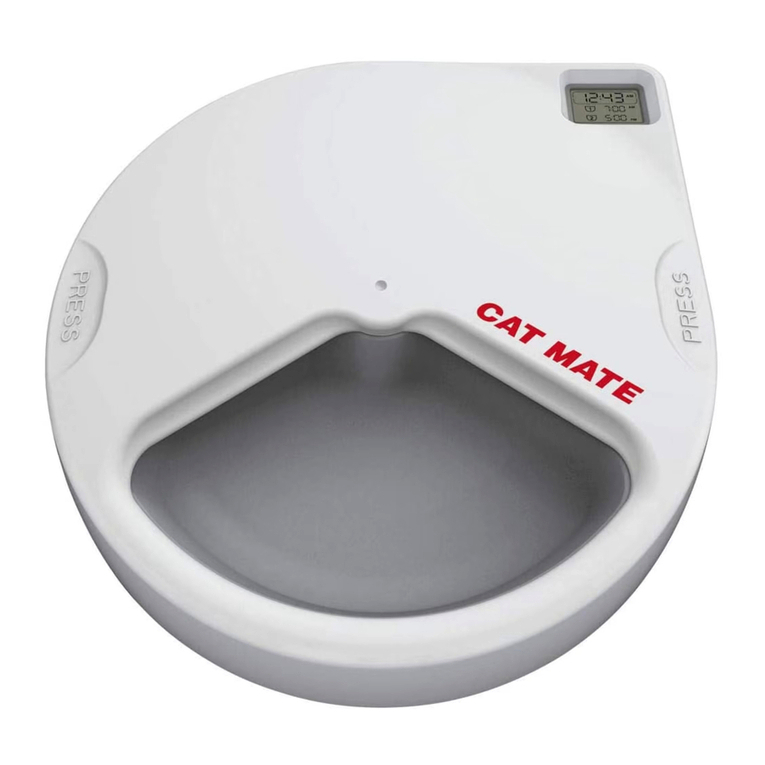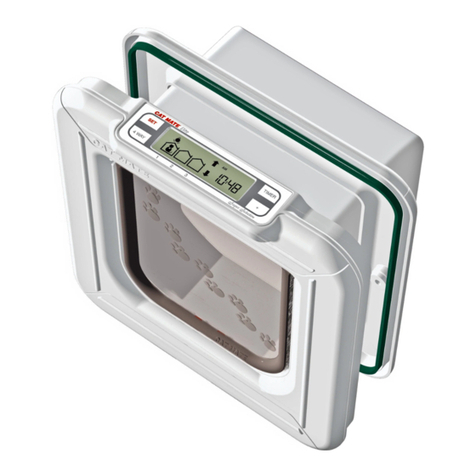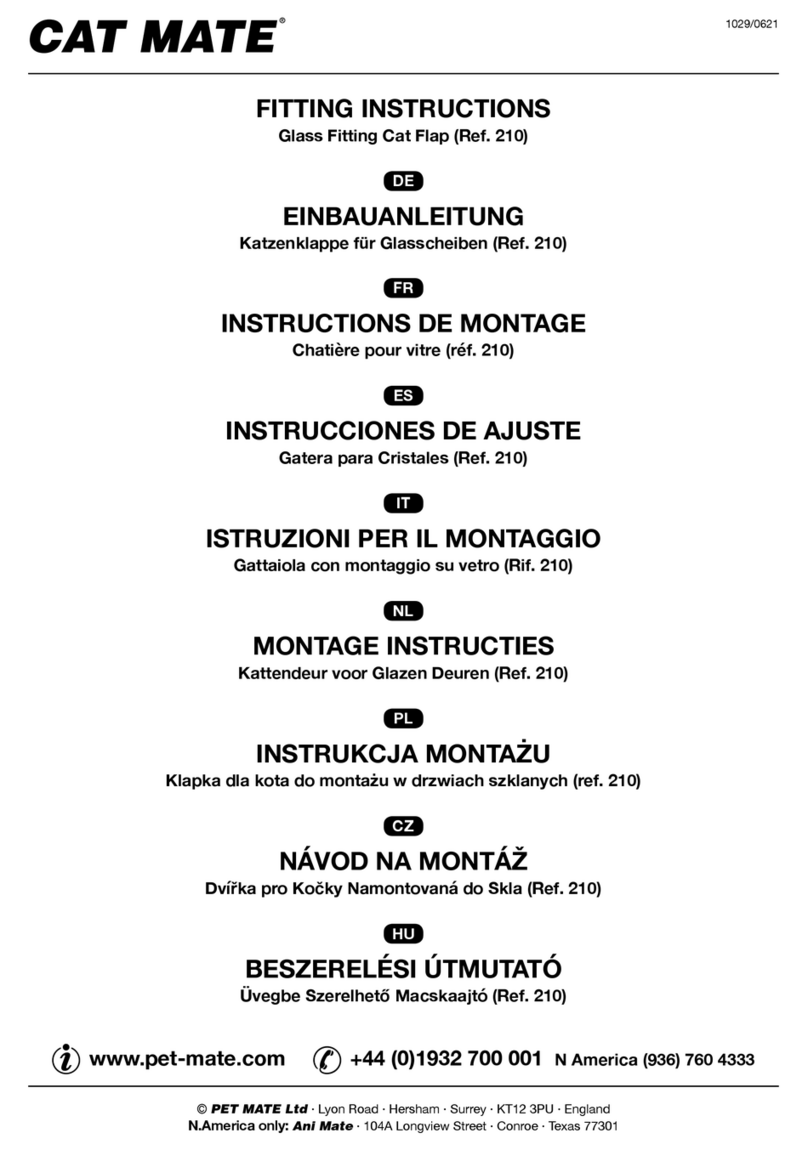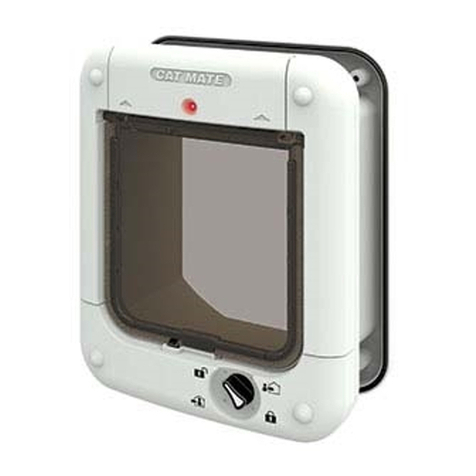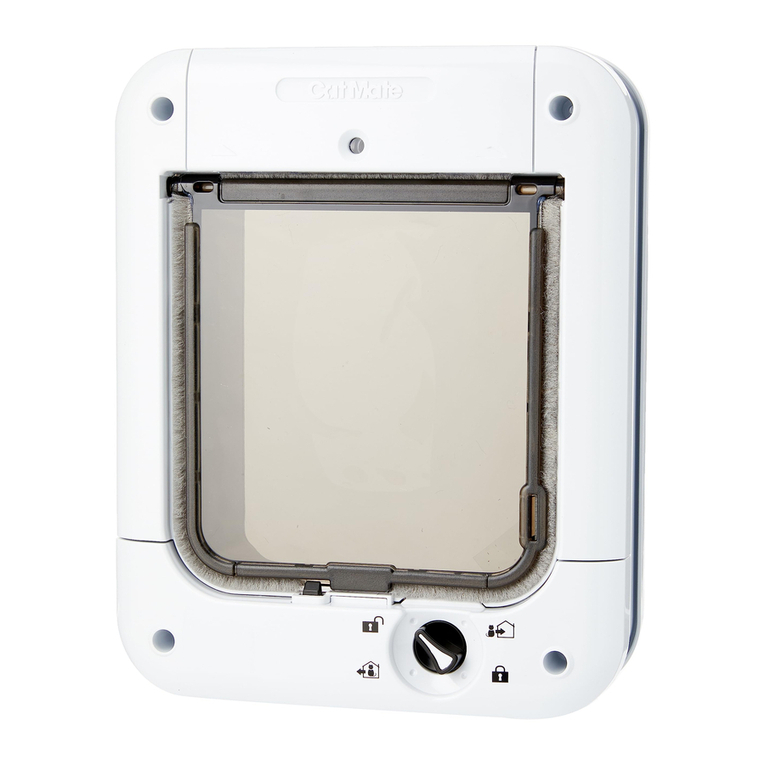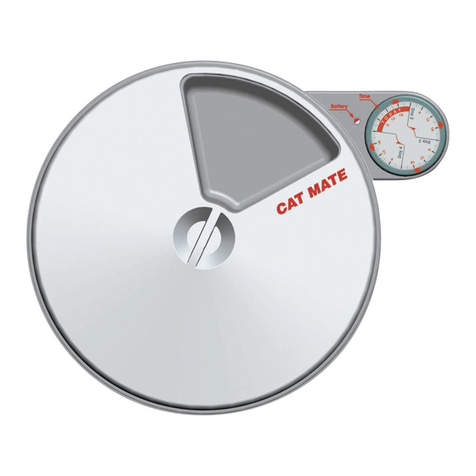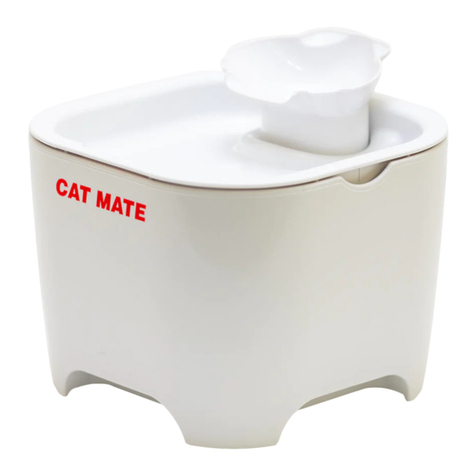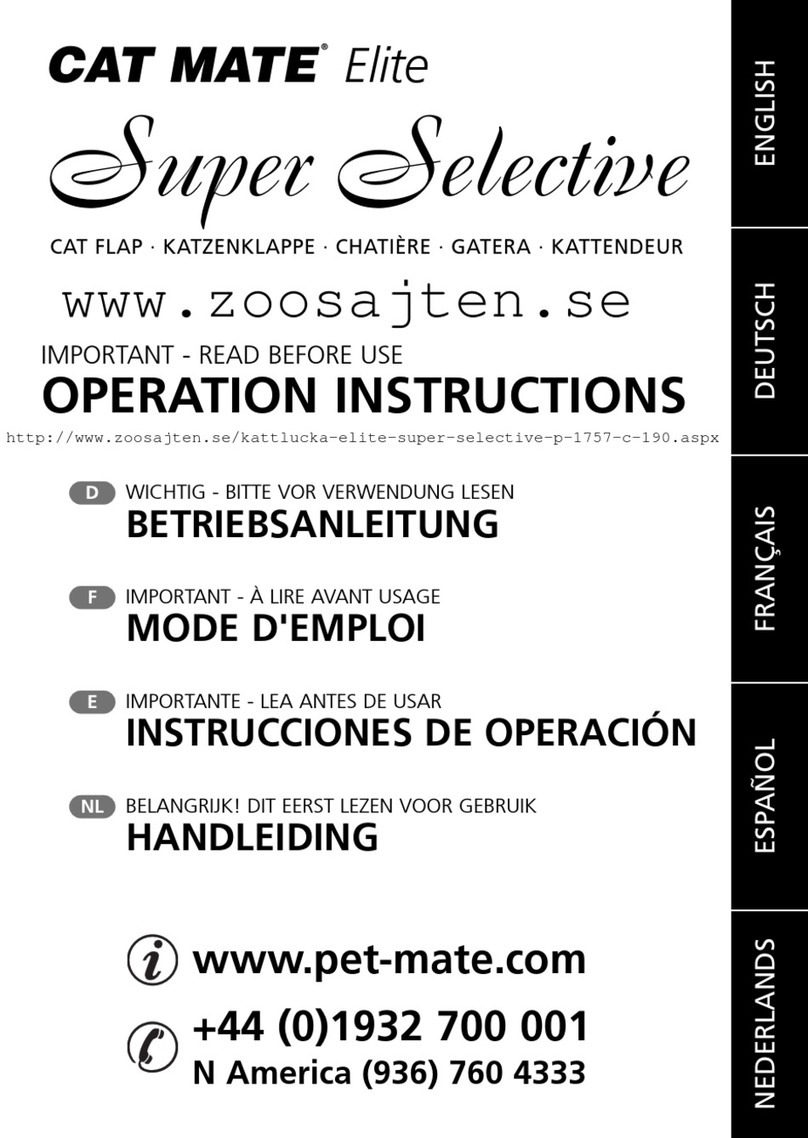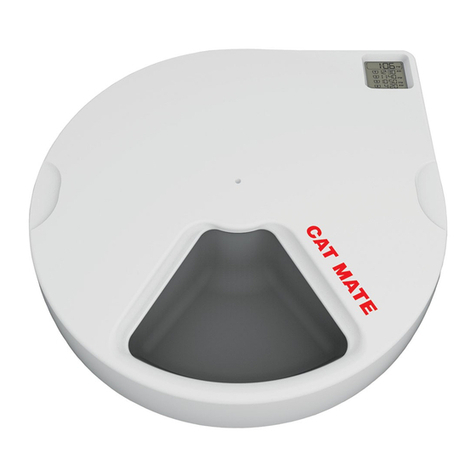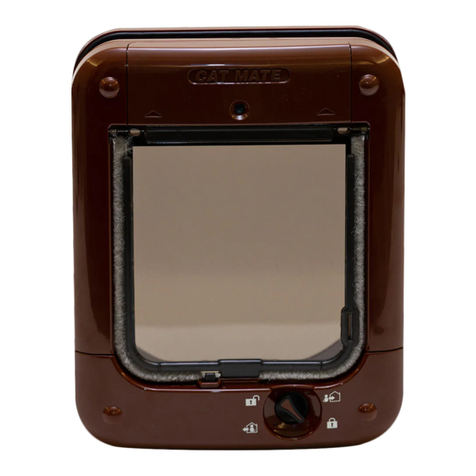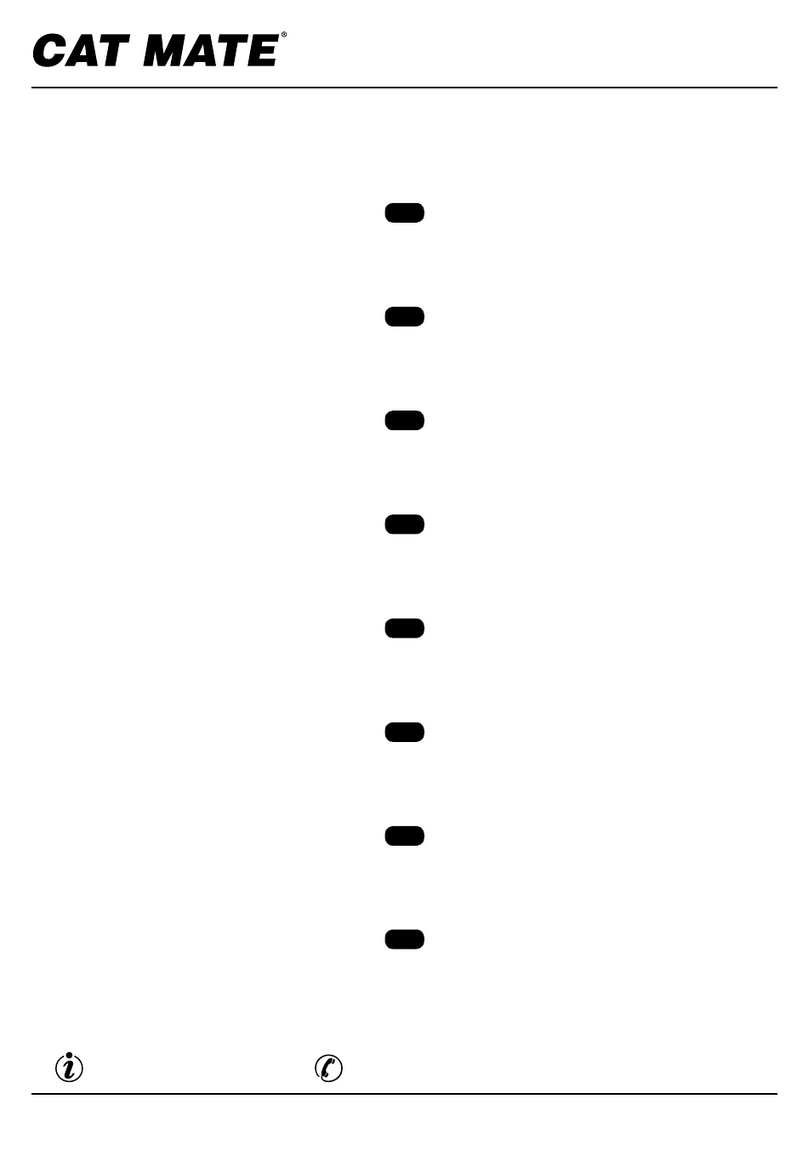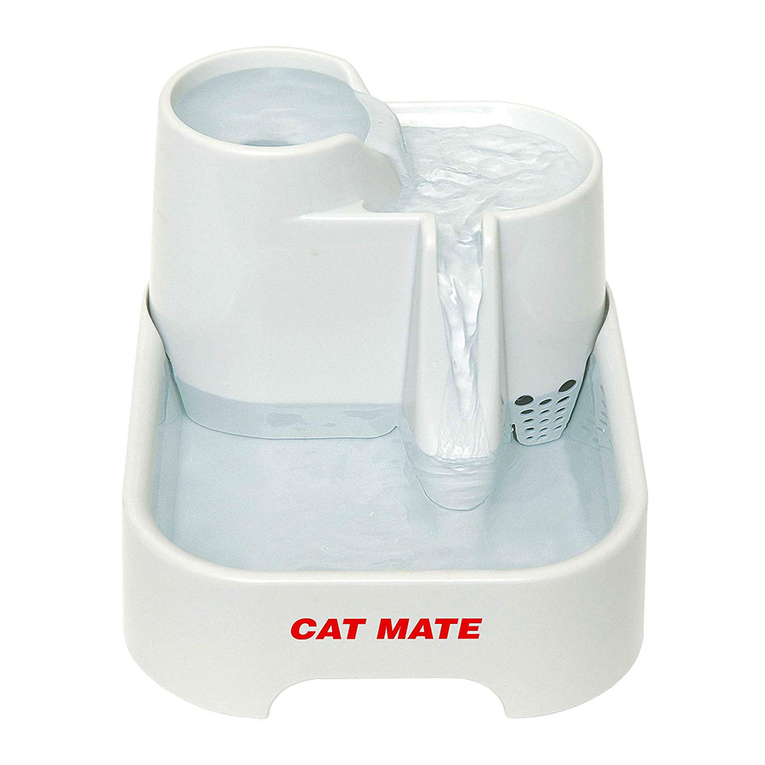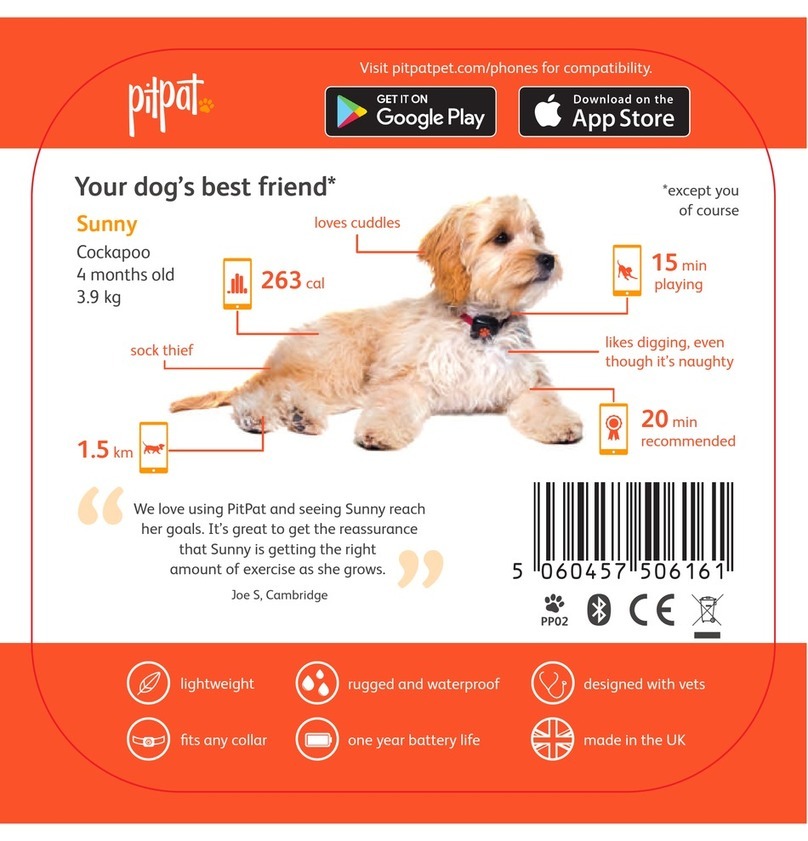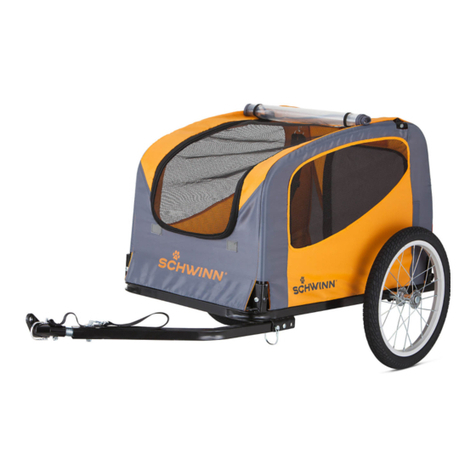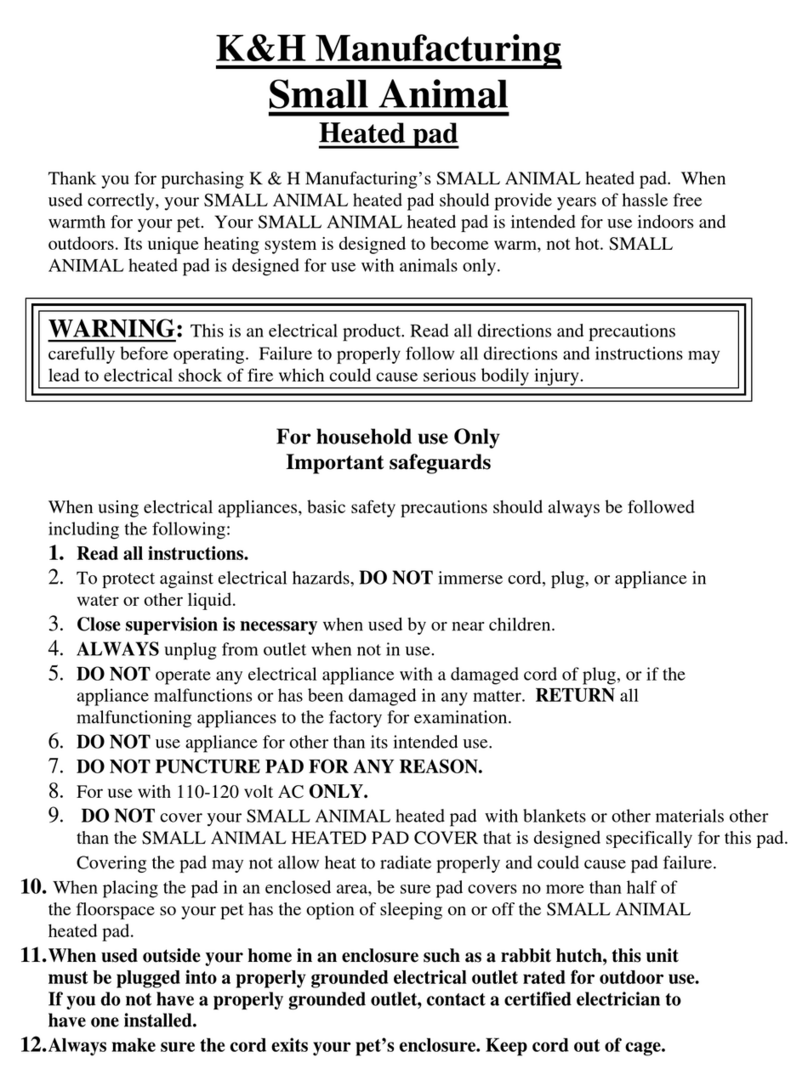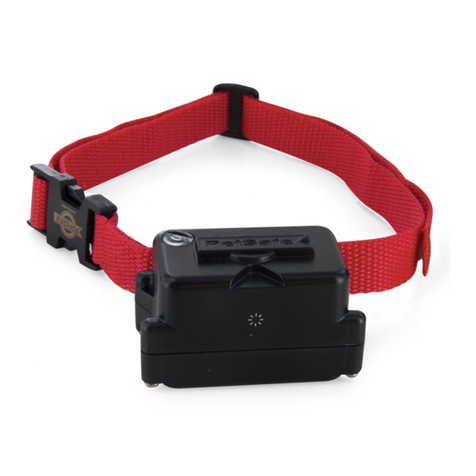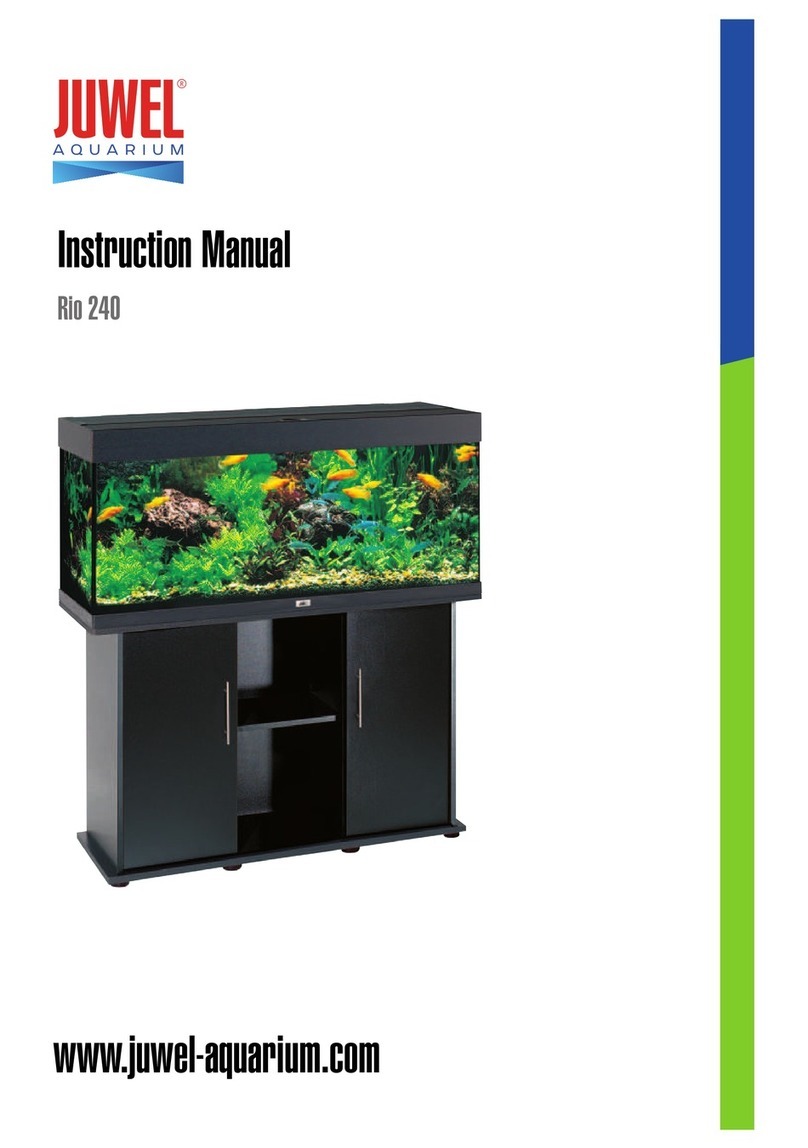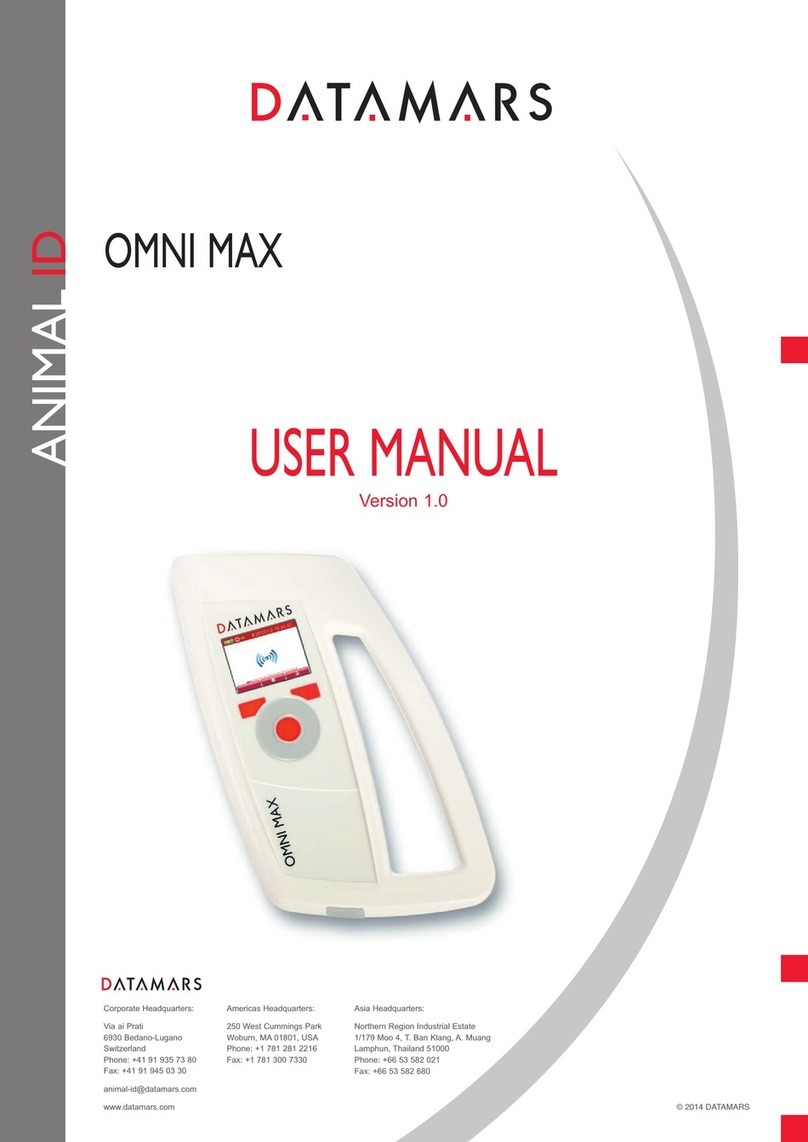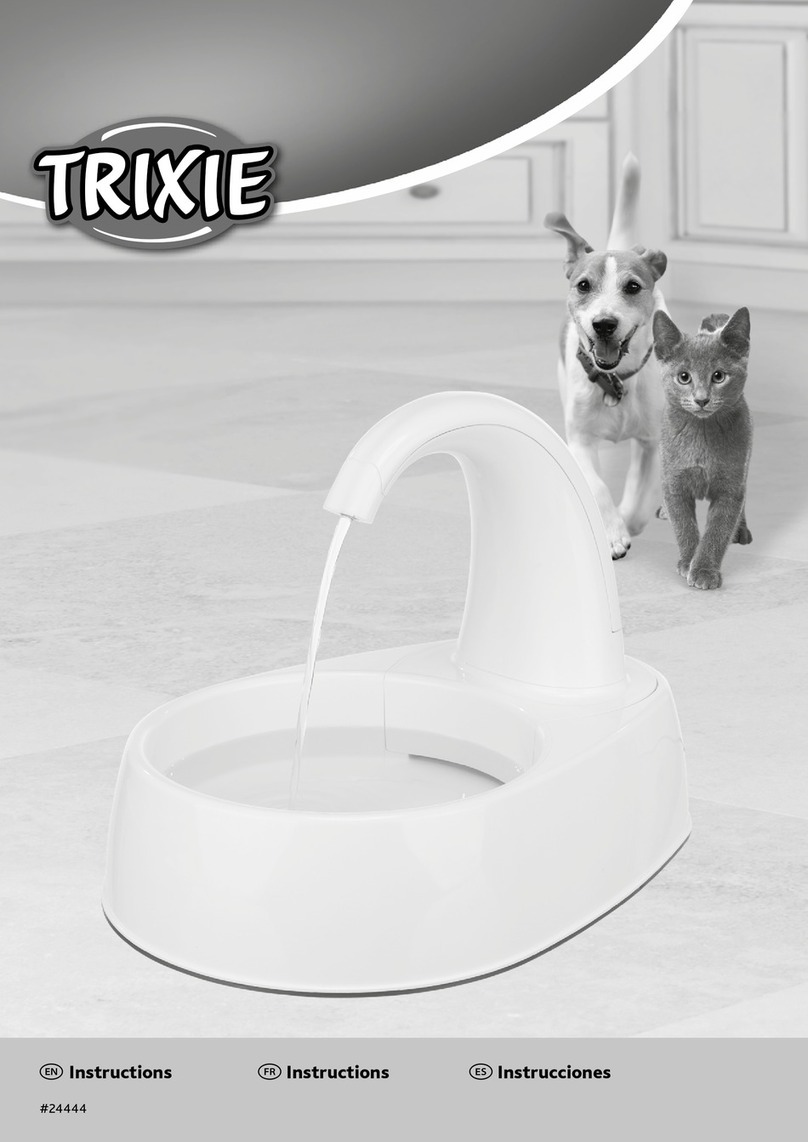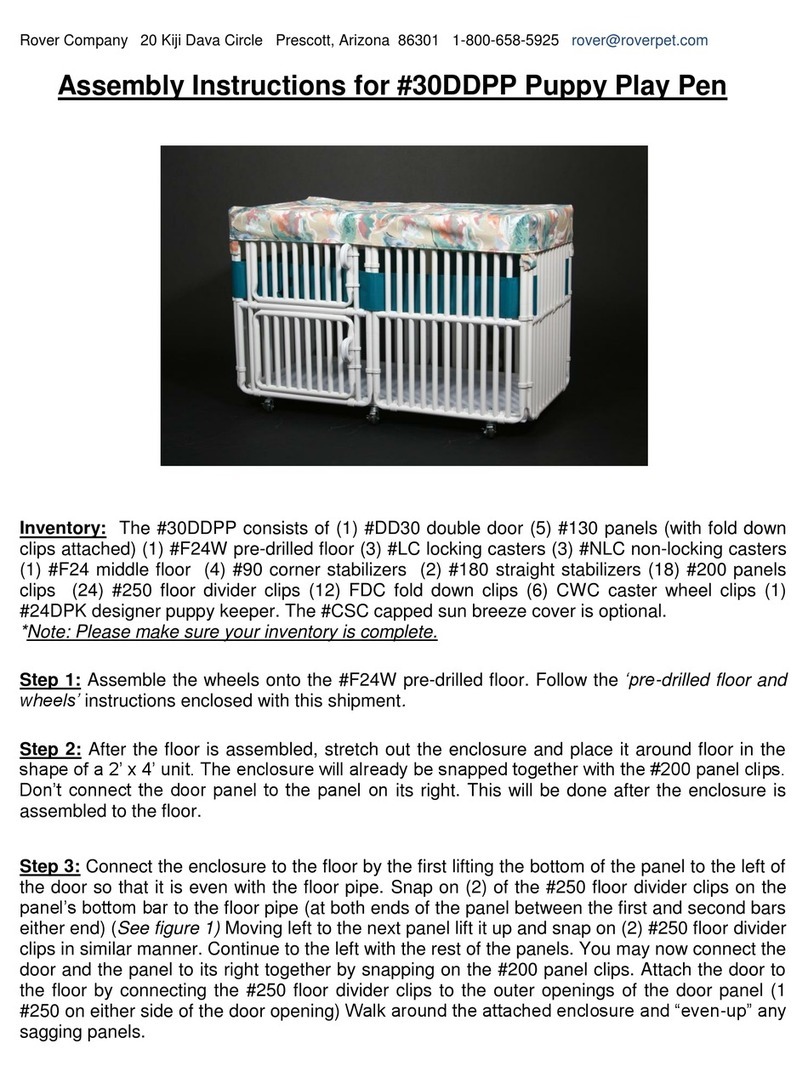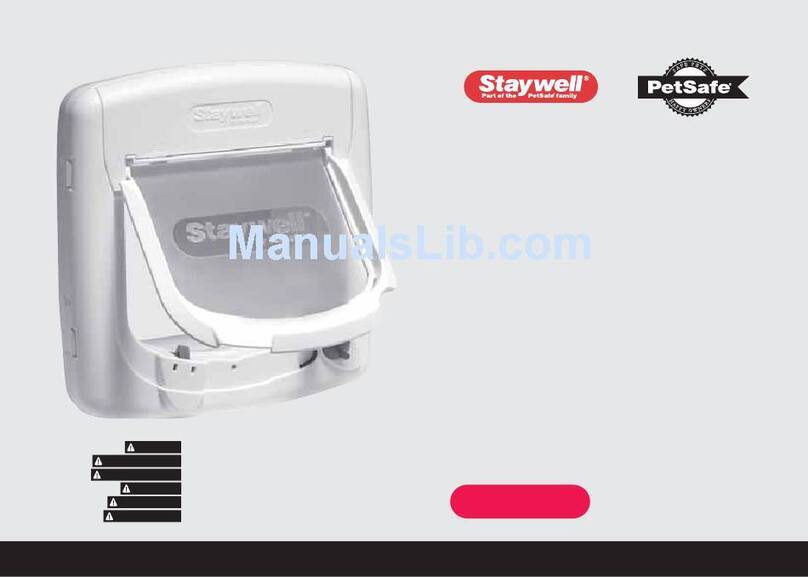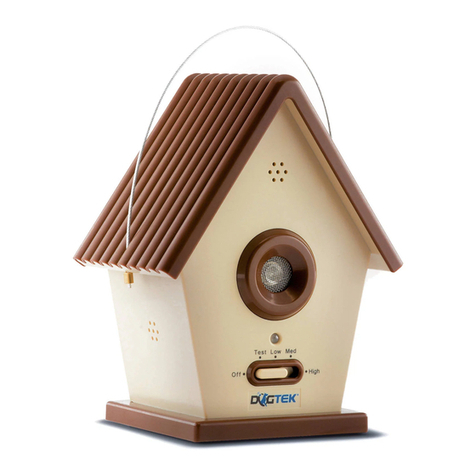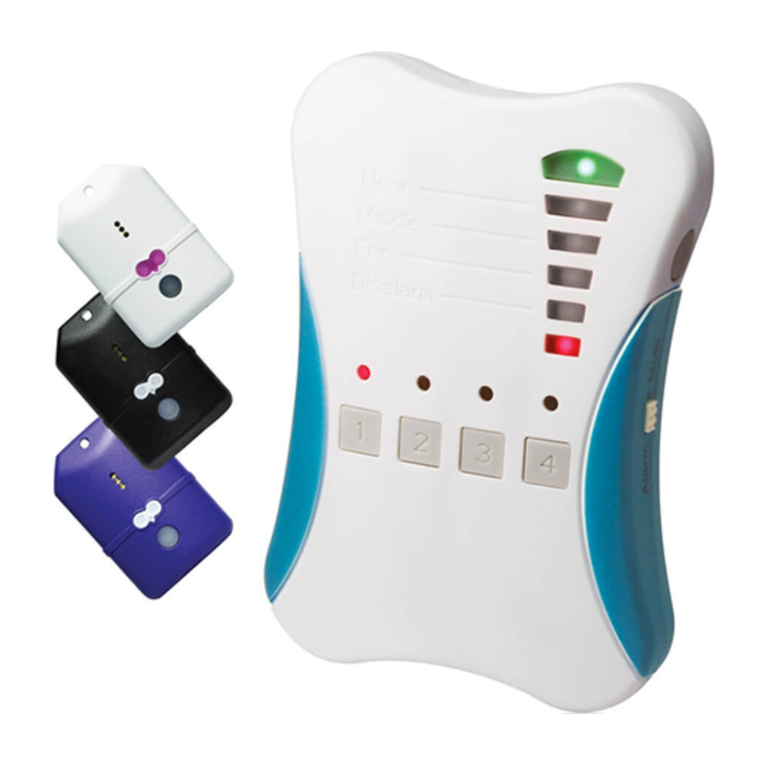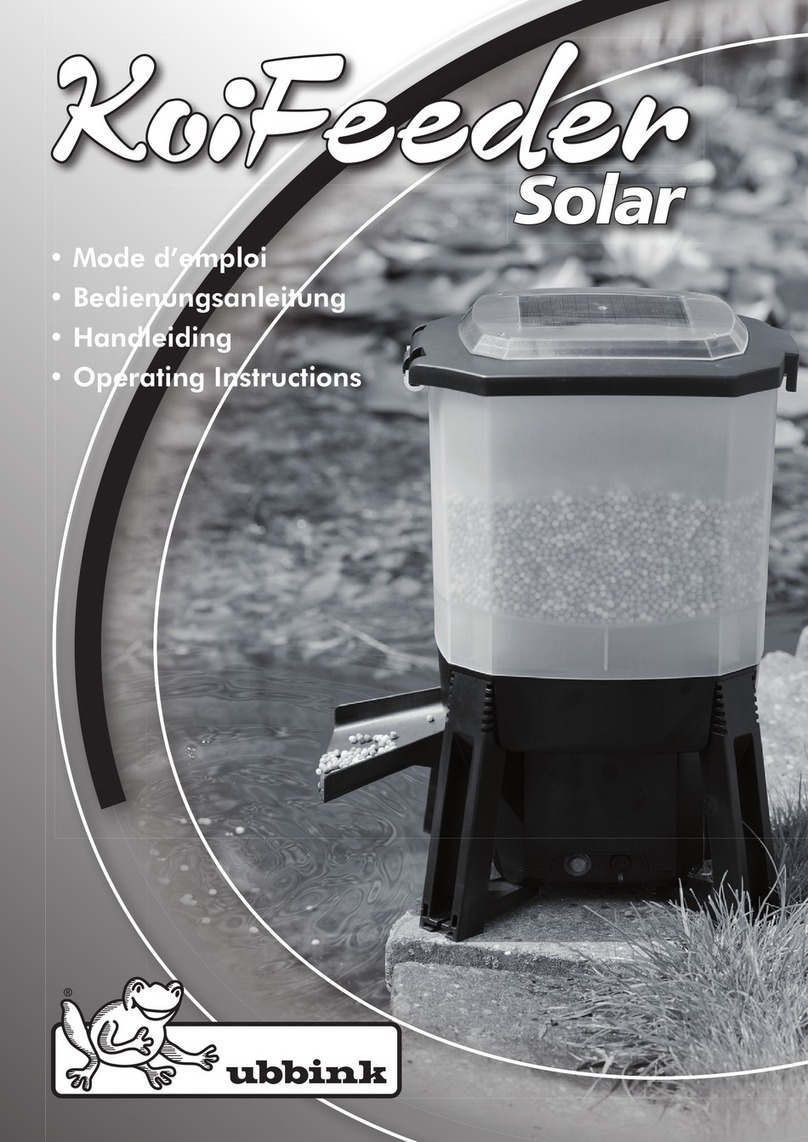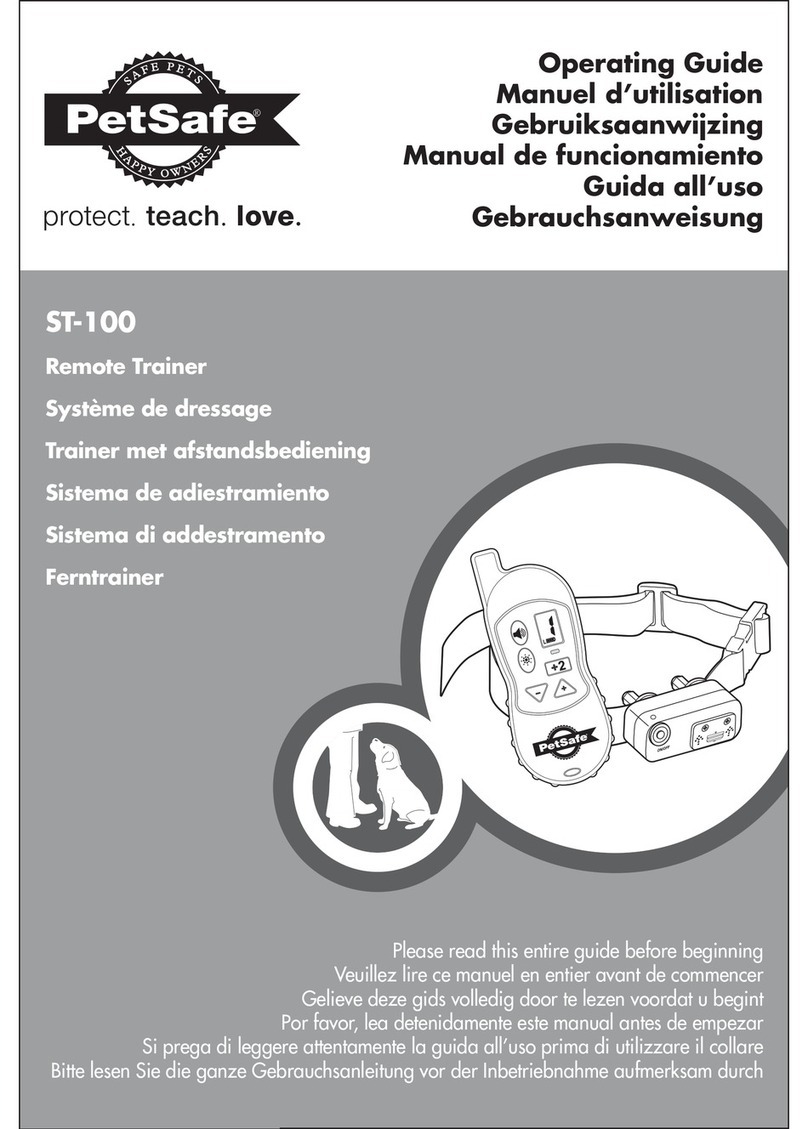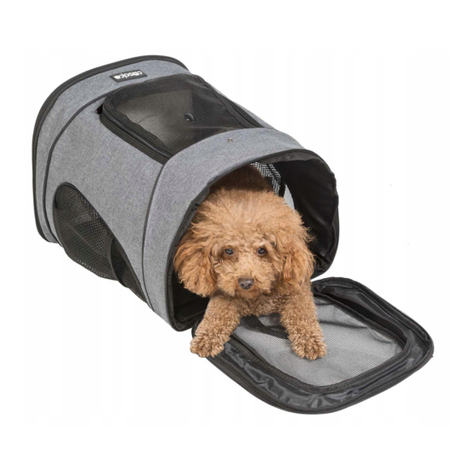9. Reviewing meal times
When the clock indicator is showing you can review all your meal time settings as follows:
9.1 Press the ‘TIME’ button to display the programmed meal time set for ‘MEAL 1’.
9.2 Press the ‘TIME’ button again within 60 seconds to view the programmed meal times for ‘MEAL 2’ and again
for ‘MEAL 3’.
9.3 Press the ‘TIME’ button again to return to the clock display.
10. Extra feed (in addition to a Set Meal)
If you would like to serve your pet additional units of food at any time, press the ‘FEED’ and ‘+’ buttons together.
The feeder will dispense one unit of food. To serve a number of units, keep both buttons held down and the LCD
will display the total number of units dispensed. Release both buttons and the unit will complete its current feed
unit. The number of units dispensed will remain displayed for 60 seconds.
11. Advance feed (serving the next Set Meal early)
If you would like to bring a programmed set meal forward, press the ‘FEED’ and ‘-’ buttons together. The feeder will
dispense the next programmed meal due and you may now release both buttons. Once the advanced set meal
(e.g. MEAL 2) has been served the next programmed meal indicator (i.e. MEAL 3) will flash on the display and food
will not be dispensed until that set time.
You may only advance meals programmed for the same day.
12. Manual feed (dispensing controlled feeds on demand)
This function allows you to serve a predetermined amount of food without programming meal times. Proceed as
follows:
12.1 Calculate the number of feed units you would like to serve per meal (section 5).
12.2 Set ‘MEAL 1’ with the number of feed units (section 6.1).
12.3 Whilst the ‘MEAL 1’ setting is flashing, press and hold the ‘+’ and ‘-’ buttons together for 5 seconds until ‘OFF’
is displayed (Fig. 9).
Each time you now press and hold the ‘FEED’ button for 5 seconds, the programmed ‘MEAL 1’ will be dispensed.
To turn the feeder back on:
12.4 Press and hold the ‘+’ and ‘-’ buttons together for 5 seconds.
The LCD will flash until clock setting is restored.
13. Frequent feed (small feeds at regular intervals)
The Frequent Feed function allows the daily feed units (section 5) to be served over the course of a day, dispensing
a single feed unit at a regular interval between a programmed start and finish time. The function is designed for
pets with specific dietary requirements (e.g. diabetic cats) or if you wish to regulate the speed of your pet’s food
intake.
The start/finish times and the feed units can be programmed as follows:
13.1 Press and hold the ‘TIME’ and ‘FEED’ buttons together for 5 seconds until the Frequent Feed indicator (‘F’)
appears on the LCD (Fig. 2).
13.2 Press and hold the ‘TIME’ button for 5 seconds until the hour figure on the clock starts to flash.
13.3 Press the ‘TIME’ button twice - the hour figure and the ‘MEAL 1’ (start time) indicator will flash.
13.4 Set the start time in the same way as setting the clock, by pressing the ‘+’ or ‘-’ buttons to adjust the hours,
then pressing the ‘TIME’ button again to adjust the minutes.
13.5 Press the ‘TIME’ button. The ‘MEAL 3’ (finish time) indicator will flash. Repeat 13.4 to set the finish time.
13.6 Press the ‘TIME’ button, the letter ‘F’ next to two zeros (‘00’) will appear and flash on the display
(Fig. 8). Press the ‘+’ or ‘-’ buttons to set the total daily feed units.
13.7 Press the ‘TIME’ button to save these settings.
The LCD will return to displaying the clock with the ‘Frequent Feed’, ‘MEAL 1’ and ‘MEAL 3’ indicators displayed.
To review, press the ‘TIME’ button once to view the start time and again for the finish time. Press again to view
the feed units and press finally to return to the clock.
To return the feeder to standard operation, press and hold the ‘TIME’ and ‘FEED’ buttons together for 5
seconds. The ‘Frequent Feed’ indicator will disappear and the clock indicator will be displayed along with the meal
indicators of any previously saved settings programmed.
14. Turning the feeder off and on
To turn off the feeder and keep the programmed settings:
14.1 Press and hold the ‘+’ and ‘-’ buttons together for 5 seconds until ‘OFF’ is displayed on the LCD
(Fig. 9).
To turn the feeder back on:
14.2 Press and hold the ‘+’ and ‘-’ buttons together for 5 seconds until LCD displays the clock and the set meal
indicators.
15. Changing the batteries
When the low battery indicator (Fig. 2.) flashes on the LCD, the batteries need replacing. Good quality alkaline
batteries should normally last approximately 12 months (depending on the number of feed units dispensed).
IMPORTANT:
• To keep the clock and all the meal settings, you must remove and replace all of the batteries within 60
seconds! The low battery indicator should extinguish when the next meal is served.
• DO NOT press any buttons during the removal or replacement of the batteries. Doing so will reset the
unit and you will need to re-programme your settings.
16. Securing the feeder to a board
If your pet(s) are likely to interfere with the feeder, we recommend the feeder is screwed to a suitably sized wooden
board. By the following method, the feeder is easily removed from the board without tools when required:
16.1 Place the base unit in the desired position on the board. With a pencil, draw around the footprint (Fig. 10).
16.2 Draw a centre line on the base unit outline and mark the screw position as shown in Fig. 11.
16.3 Select a suitable screw (Fig. 12) and screw it into the board, leaving a distance of 25mm (1”) between the
board and the base of the screw head to enable the feeder to be removed for battery replacement and
cleaning.
16.4 Locate the base unit on to the screw and slide it in to the fastened position (Fig. 13).
16.5 Line up the base unit within the drawn outline and mark the front screw positions at the narrowest end of
the screw holes (Fig. 14).
16.6 Remove the base unit from the board. Apply 2 further screws (as specified in 16.3) and locate the base unit
back on to the board (as 16.4). If necessary, these 2 screws may be screwed down further to secure the
feeder more firmly.
17. Cleaning
The hopper, hopper lid, feeding bowl and feeding mechanism (F) are made from food-safe materials that may be
washed in a dishwasher. Clean the base unit using a cloth dampened with water only - detergents and polishes
may cause damage.
17.1 Remove the feeding bowl from the base unit by holding in the sprung clips on either side and pulling the
bowl away from the unit (Fig. 15).
17.2 Remove the feeding mechanism by releasing the retaining clip (Fig. 16).
18. Troubleshooting
18.1 Feeder Blockage
Your Cat Mate feeder has been extensively tested with a variety of dry foods but in the unlikely event that
the feeder becomes jammed, the base unit is programmed with an automatic clearing function. If however
the feeder is unable to clear the blockage, the whole LCD screen will flash. The blockage will need to be
cleared manually, as follows:
• Lift the hopper out of the base unit.
• Rotate feeding mechanism by hand as shown in Fig. 17 until food is moving freely again.
NOTE: Before reassembling the feeder, we recommend the batteries are replaced (see section 15). Also
consider the use of a different feed that may be less prone to blockage.
• Reassemble the feeder and press the ‘TIME’ button to stop the display flashing and resume normal
operation.
18.2 Display non-responsive
In the unlikely event that the display becomes non-responsive, wait 3 minutes before attempting to press
any buttons. If full function is not returned remove batteries for 5 minutes. Then replace batteries and
re-programme feeder.
6 7
